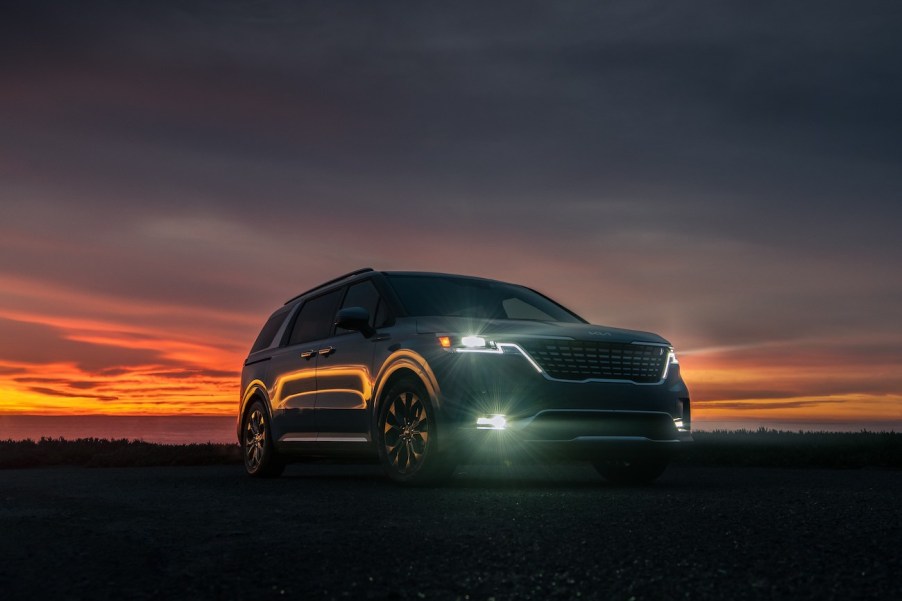
All Minivans Suffer From A Serious Safety Flaw
Minivans are walking through the Valley of the Shadow of Death. It has been a long couple of decades since most American families had a minivan in the driveway. Even though the shadows are growing long for the Minivan, we still believe in them. However, this new IIHS finding isn’t helping. The IIHS found that all of the most popular minivan models suffer from the same rear seat safety issues.
Are minivans safe for families?

Minivans are perfect for families because they offer so much room, tons of amenities, a quiet and comfortable ride, and giant sliding doors that make it easier for younger people to enter and exit.
That said, the IIHS just crash-tested the Chrysler Pacifica, Kia Carnival, Toyota Sienna, and the Honda Odyssey, and the results were a little alarming. Each of the popular minivans performed worse than expected in the updated moderate overlap front crash test. This test is designed to evaluate the safety of passengers in the rear rows, which, in minivans, is our kids. The Pacifica, Carnival, and Sienna all received a “marginal” rating, while the Odyssey received a “poor” rating.
Why are minivans so unsafe?

The crash test was the first indicator that minivan designers seemed to have forgotten about the safety of the people riding in the back. The second indicator is that other than the Toyota Sienna, none of the minivans have rear seatbelt reminders.
Minivans are intended as a family transporter. This makes the results of the IIHS testing particularly disappointing. IIHS President David Harkey said, “Back seat safety is important for all vehicles, but it’s especially vital for those, like minivans, that customers are choosing specifically to transport their families,” said Harkey, “It’s disappointing that automakers haven’t acted faster to apply the best available technology to the second row in this vehicle class.”
Making an unsafe backseat in a minivan is kind of like building a sports car with tons of aero, giant brakes, and lightweight, but then putting a 3-cylinder diesel engine up front.
All four minivans tested by the IIHS scored pretty badly. The seatbelt positioning and/or excessive seatbelt forces meant rear-row passengers risked chest injuries. Strike one. Other issues included the Chrysler Pacifica’s side curtain airbag not deploying at all during testing and crazy high forces on the head and neck of the rear passengers in the Odyssey.
How does the IIHS test rear-seat safety?

The IIHS updated its moderate overlap front crash test to better understand rear-seat safety. According to the IIHS, this reworking of the test is because front-row safety has improved so much thanks to airbag and seatbelt designs, while rear seating areas haven’t received the same attention.
Even still, the IIHS still believes that the back seats are the safest area for children because of the risks of airbag injuries to smaller bodies when in the front row.
This new test puts a second crash test dummy in the rear seat behind the driver. The main dummy is still in the driver’s seat and is the size of an adult man. However, the rear dummy is closer to the size of “a small woman or 12-year-old child.” In order to score well, the rear-seat dummy must not be at “excessive risk” of injury to the head, neck, chest, or thighs. They say the seatbelt should also stay in place without the dummy sliding beneath it, and its head should not hit the interior or front seatback. This is a tall order, and the minivans couldn’t execute.
Are any rear seats safe?

The IIHS has found similar results in almost all smaller cars, trucks, and SUVs, too. As upsetting as it is in the smaller cars, we sort of expect that especially considering how many giants stalk our roads these days. However, seeing the results of the minivans’ crash testing is a bit of a shock.
The good news is that now that we have the information, maybe it will usher in a new era of car safety.





